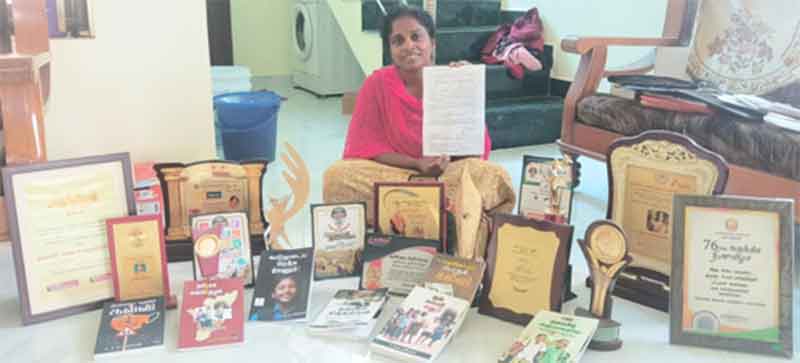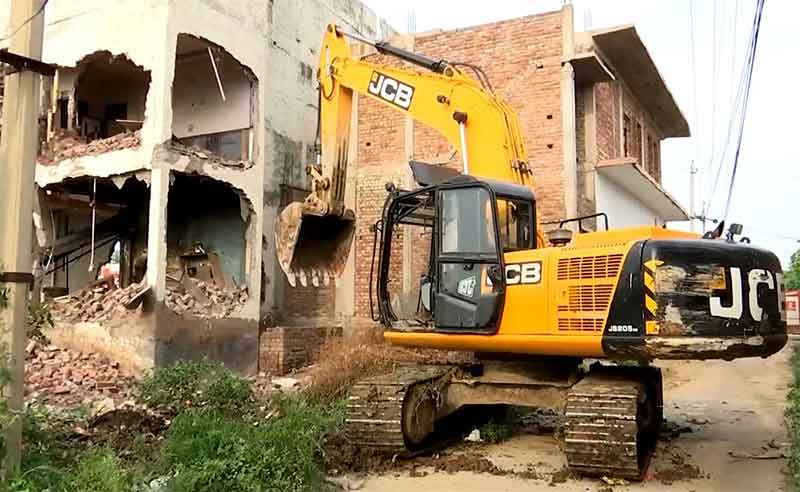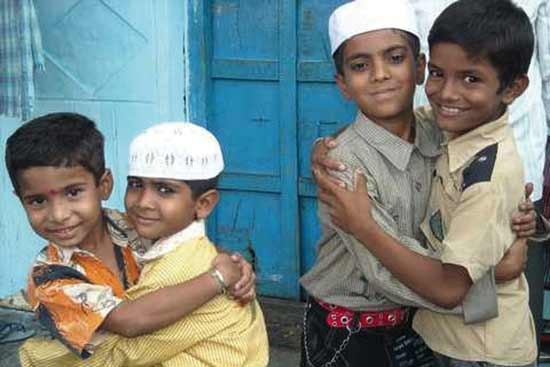
Today we commemorate the 50th birth anniversary of the Association for Protection of Democratic Rights (APDR) of West Bengal which is one of the oldest human rights organisations in India. A truly landmark day in the history of the civil liberties movement in India. Positive that today inspite of all ups and down it is shimmering it’s torch .
It was formed on this day in 1972 in Kolkata amidst the “inhuman state terror unleashed by the Indian State on political activists, in the background of the Naxalbari uprising. On 25th June 1972 the first declaration of APDR was adopted and its first committee was constituted is taken as its foundation day.
No political party can be awarded credit for founding the APDR and till now it has been able to maintain it’s organisational independence from all parties and groups. Unfortunately it has been projected as a front organisation of the Naxalites or Maoists by successive governments. That is because it has been most forthright in defence of the democratic rights of the communist revolutionaries who are the most targeted of all opposition groups under any regime.
It was heart touching to witness a 1500 people strong rally today in college square in Kolkata commemorating the historic day with people from every sphere of society, with neo fascism looming at an unprecedented magnitude. A wide range of democratic organisations participated which was positive. It symbolised the resurgence of democratic spirit to challenge the neo-fascist tide, in coming days. The college square was reminiscent of a mini-festival of the masses. The fascism prevalent in the times of terror on naxalite movement has been ressurected in a different form today.
Ironic that it’s historical birth occurred just a month before the death of Charu Majumdar, the founder of naxalbari, in police custody under questionable circumstances in 1972,.APDR’s formation was a significant it formally revived the organised civil liberties movement in India, which had turned defunct by the early 1950s, especially after the beginning of electoral democracy in 1952.In many ways the APDR as a kernel or revolved around the naxalbari uprising. Its formation coincided with the creation of civil liberties organisations all around India like Andhra Pradesh Civil Liberties Committee, Organization for Protection of Democratic Rights, Organisation for Protection of Democratic Rights and Peoples Union for Democratic Rights.
It is remarkable the manner in many junctures it ressurected itself from dire straits to set the ball rolling again. It undertook most meritorious work in organising mass resistance against political prisoners framed, false encounters of naxalites, inhuman treatment of political prisoners, against black laws enforced, against police lathi charges on workers strikes, attacks on student community; attack son deprived castes or against suppression of peasant struggles. A big nucleus of the organisation was built, with it’s network spread to encompass many a region. It created a pivot for all struggling sections to assemble and resist autocracy. It was even critical of certain actions of Maoists in Lalgarh .but overall expressed a very soft corner for the Communist revolutionary camp.APDR won the support of any a Bengali theatre artist, writers, poet or film maker.
It is a most welcome sign that youth from different trends of the revolutionary camp are entering the arena of the APDR.,and fresh nucleus of young activists are being created.
It was heart touching to witness a 1500 people strong rally in collage square commemorate the historic day with people from every sphere of society, with neo fascism looming at an unprecedented magnitude. A wide range of democratic organisations participated which was positive. It symbolised the resurgence of democratic spirit to challenge the neo-fascist tide, in coming days. The college square was reminiscent of a mini-festival f the masses. The fascism prevalent in the times of terror on naxalite movement has been ressurected in a different form today.
In Earlier years it most heroically resisted the Opression of the Congress of Sidharta Shankar Ray and with utmost consistency exposed the stage attacks on naxalites outside and inside prison walls. After 1977 it organised democratic protests agents the social fascist acts of the CPM,in assassinating naxalite activists and suppression protests like that of Kanoria Jute mill workers. It published reports on assassination of Party Unity Activist Bhowmick and peasant leader Gundahar Murmu.
Achievements
APDR’s achievements include raising awareness on prisoners’ rights, getting the state government to recognise political prisoners (in 1993), creating awareness against extra-judicial killings, illegal arrests and detention, and campaigns against the death penalty and laws that give the state additional powers, such as TADA, MISA and UAPA.
Fifty years since its formation, it evolved to emerge West Bengal’s largest rights organisation, with a volunteer force of about 5,000 people and branches in every district of the state, according to the estimates of vice-president Ranjit Sur. APDR continues to be unregistered and unfunded. Sur said, “We have a philosophical stand against seeking the state’s sanction for what we do. This is part of democratic rights.”
APDR tooth and nail resisted turning into a front of any Naxalite or Maoist group and infact even waged ideological confrontation with certain actions of Maoists.in Lalgarh.It placed graet stress on the human rights movement being distinctive from a Marxist-Leninist group.
According to Sur, among APDR’s major failures is their inability to ensure the release of political prisoners during Mamata Banerjee’s rule, which she had promised before coming to power in 2011.
I can never forget my meeting in Allahabad with Dipankar Chakraborty, who before he died in 2013 was the vice-president of APDR.Most illustratively he summed up the birth of APDR and how it sprouted, as distinct from any naxalite front.
It was APDR’s work that enabled the democratic mass movements and organisations to stand on their feet.
I recommend Nilanjan Datta’s forthcoming book on Civil Liberties Movement in India as a comprehensive work for reference.
Civil liberties in India: The changing sphere
India’s first such organisation, the Indian Civil Liberties Union, founded in 1936 at the call of Jawaharlal Nehru, had become defunct down even before independence. The civil liberties movement had resurgence during 1946-52/53 – when the country was going through the transitional process from a colony to a sovereign, independent, electoral democracy. This time, the target of the civil liberties movement was the Congress, which was accused by the communists and Hindutva nationalists of trying to suppress voices of opposition. Communists and Hindutva nationalists often co-existed in these platforms.
A Bengal civil liberties committee was formed in 1946 and, according to Kolkata Police files, it was a CPI-backed organisation. The Madras Civil Rights Union (MCLU) was founded in 1947. The Bombay Civil Liberties Union conducted a provincial conference in 1948. In 1949, an all India civil liberties conference was held in Chennai at the initiative of MCLU. But activities of all these organisations died down 1952-53 onwards.
Excerpts from Ist Declaration
“DEMOCRATIC and human rights are the indispensable preconditions for the development of individual and society. Over centuries, people of all lands have been in the ceaseless struggle for attaining these fundamental rights and getting them well-entrenched and expanded in their social organisations.
In India, too, tradition of movement for achieving these human rights forms a glorious chapter of our history. In days of the British whenever the alien rulers struck at the national and democratic movement, robbed us of the fundamental human rights and resorted to repression and detention without trial, the people from all walks of life came forward to protest against those.
It was in this way that the people of India have been fighting without respite over a long period for a number of basic human rights, which ultimately won constitutional recognition. These are freedoms of association, freedom to call mass meeting, freedom of religion and political belief and right to have a secure life, etc. The solemn promise that these rights will remain unchanged and be protected by the prevalent laws of the Indian Union have also been enshrined in the constitution.
Quoting writer Nilanjan Datta “Three aspects merit attention in this preamble. First, the activists in this phase had begun to speak in the language of universal human rights, while putting emphasis on the protection of ‘democratic rights’. Second, even as they set it in a global context — where “people of all lands have been in the ceaseless struggle” — they were well aware of the legacy of the movement in India and called it a “glorious chapter of our history”. And third, they based their claims on the “solemn promise” of the Constitution of the country to preserve the hard-earned fundamental rights.”
“Thus, with their feet firmly on the ground and vision clear and far-reaching, they set out to challenge the “reckless abuse of power in the name of maintaining law and order”. They indicted the state’s tyrannical activities on three counts: that these “stand against humanity, are illegal and undemocratic”. Here we can see that universal, legal as well as democratic principles are invoked together to prepare a strong moral ground for the movement. Towards the end of the declaration, there is an appeal to all sections of our people including workers, peasants, intellectuals and students — whatever differences of opinion and party affiliation we have, let us agree to a united effort to end this reign of terror and repression and also to end mutual in-fighting amongst us.”
“The formulations of the appeal shows that the founders of APDR wanted to achieve a social as well as political unity within the rights movement. The last part is very specific to the contemporary context — hostilities not only between the radical and parliamentary Left but also amongst the various groups and streams of the radical Left had reached fratricidal proportions which needed to be put a brake to. However, this infighting never stopped totally, although the degree of violence has varied.”
Pioneers of the APDR (information from ground zero)
Amid the repressive atmosphere in West Bengal prevailing in the wake of the state terror unleashed to crush the Naxalite movement, some people had become desperate to find a way to breathe. Among them, those who had seen the colonial days and had fought for freedom, felt that “the orgy of slaughter and brutal repression that have been sweeping for last two years all over India was unknown even in the days of British Raj”.
Sushil Bandyopadhyay [1902-1976], who had spent 30 years of his life as political prisoner and internee before Independence and again went to jail in 1968,. He was an old man by that time, fondly called ‘Dadu’ (Grandpa) in his south-west Calcutta neighbourhood of Behala. Witnessing the police drag away two boys barely out of their teens, he obstructed them in the manner of a lioness to protect her young and rescued them from possible slaughter. Despite staying out of limelight, he still commanded great respect from many people of position who had been his followers during the freedom struggle.
Promode Sengupta [1907-1974], an associate of Subhas Chandra Bose and a former minister in the Azad Hind Government. He had also played an active role in the Civil Liberties Committee (CLC) formed before Independence, first as its joint-secretary and later as secretary. He was also working with the ‘Marxist group’ within the Forward Bloc after coming back to India after the war. Intelligence reports, however, said that he was actually a communist mole in the Forward Bloc and it was the CPI which told him to join the CLC. This well-known freedom fighter was arrested in “free” India under the Preventive Detention Act in 1950.
When the 1967 uprising took place, both Bandyopadhyay and Sengupta became actively involved in the Naxalbari O Krishak Sangram Sahayak Committee (Naxalbari and Peasant Struggle Solidarity Committee). Sengupta also joined the All-India Coordinaion Committee of Communist Revolutionaries (AICCCR), though he later fell out with Charu Mazumder and other leaders.
Dr Amiya Kumar Bose [1900-1975] was a leading cardiologist of Calcutta. He was never a member of the communist party, but was close to many communist leaders and intellectuals. He was actively associated with a number of Left-inspired social and professional organisations including the Students’ Health Home, Peoples’ Relief Committee and Indian Medical Association. The road where he used to live is now named after him.
Kapil Bhattacharya [1904-1989] was a civil engineer who did some innovative experiments with concrete, lived in France for a while and wrote in both French and Bengali progressive literary magazines. After coming back to India, his interest was turned towards the character of rivers. He became a pioneering critic of big dam projects at a time when these were regarded as the “temples of modern India”. For this blasphemous view, the corporate Press branded him as a traitor to the nation.
Activist-lawyer Abdul Latif had been an assistant secretary of the CLC in 1946-47. He went over to Pakistan during Partition, did the Communist Party’s underground work there and was jailed in 1949. He came back to India after being released in 1953 became a trade unionist. He dropped his party membership in 1966. APDR’s first joint assistant secretary Sanjay Mitra has said in his reminiscence on the early days of the organisation that it was Latif who had suggested the name ‘Association for Protection of Democratic Rights’. Latif though has said in his own memoir that the name was given by a fellow lawyer called Ajit Dutta, who was “very enthusiastic about forming a civil liberties body”. Dutta had asked Latif to write a draft declaration for the organisation. He wrote it and discussed it with some others lawyers before the first preparatory meeting for the organisation. At the meeting, Sanjay Mitra said it lacked spirit. Then, Mitra was asked to prepare another draft. Dutta and some others found Mitra’s draft too political and they backed out, but Latif stayed on for some more time.
Harsh Thakor is a freelance Jounalist who has travelled around the country to witness mass programmes and been close to civil liberties organisation sin India, attending many civil liberties conferences and visited Kolkata on several occasions.
















































